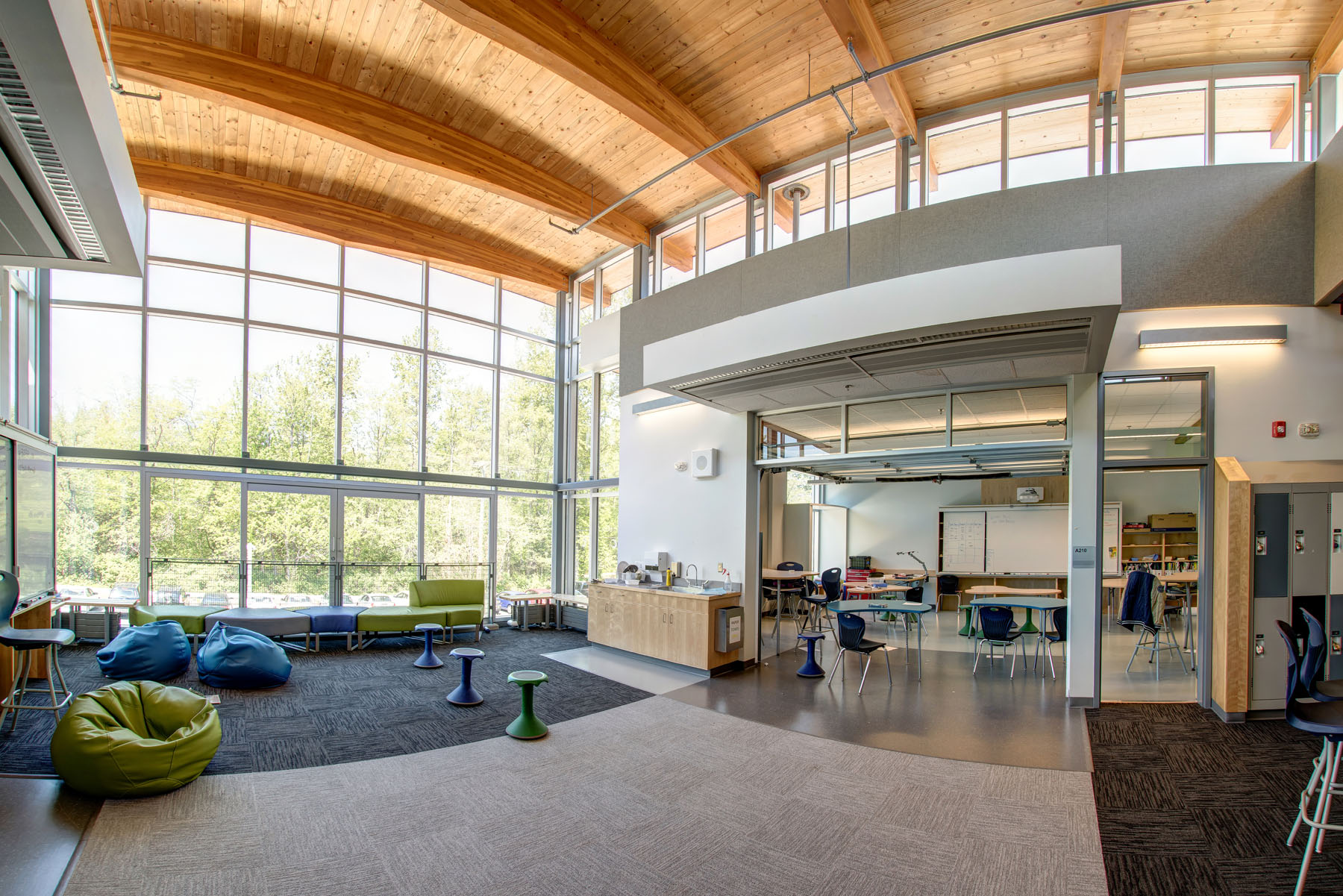
Daylighting
Daylighting
Problem
A wide range of daylighting and inconsistent window strategies negatively impact student health, well-being, and performance. A century of building design calling for more efficient and cost-saving endeavors has resulted in negative energy situations in classrooms with no natural daylight, unbalanced fluorescent light, flickering, glare, overheating, and reduced student performance.
Solution
Integrated daylighting strategies promote students’ well-being and learning. Therefore, the solution is to achieve adequate daylighting across all workspaces. An integrated, balanced daylighting plan including glare control, various shading options, and circadian lighting to mimic natural daylight patterns supports student and building performance.
Related Patterns Indoor-Outdoor Connections, Health, Fitness, & Wellness, Interior/Exterior Vistas
View Image Gallery








Learn More
- Case Study: Anne Frank Inspire Academy
The community wanted natural light throughout the school -- see the result.
- Daylighting Impacts on Human Performance in School
Our desire to experience daylight has deep roots.
- Daylight and School Performance in European Schoolchildren
This article from the International Journal of Environmental Research and Public Health demonstrates the effects of natural light.
- Research shows the benefits of Daylighting
Architect, author, and researcher Lisa Heschong on the benefits of daylighting.


